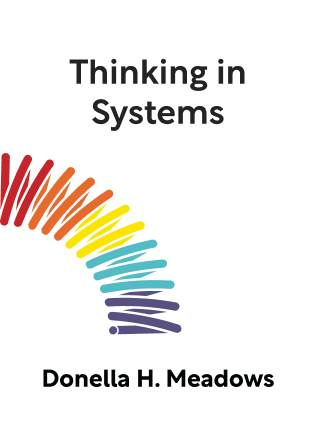

This article is an excerpt from the Shortform summary of "Thinking in Systems" by Donella H. Meadows. Shortform has the world's best summaries of books you should be reading.
Like this article? Sign up for a free trial here .
What is the feedback loop meaning? What can feedback loops tell us about systems?
The feedback loop meaning is meant to help you understand persistent behaviors in a system. A feedback loop occurs when changes in stock affect the flow of the stock.
Read more about the feedback loop meaning and how they occur in systems.
Feedback Loop: Meaning and More
To define feedback loops, you have to understand systems. Systems often produce behaviors that are persistent over time. In one type of case, the system seems self-correcting—stocks stay around a certain level. In another case, the system seems to spiral out of control—it either rockets up exponentially, or it shrinks very quickly.
When a behavior is persistent like this, it’s likely governed by a feedback loop. The feedback loop meaning is when changes in a stock affect the flows of the stock.
Balancing Feedback Loops (Stabilizing)
(Shortform note: Balancing feedback loops are also known as negative feedback loops or self-regulation.)
In balancing feedback loops, there is an acceptable setpoint of stock. If the stock changes relative to this acceptable level, the flows change to push it back to the acceptable level. These balancing loops are part of how you define feedback loops.
- If the stock dips below this level, the inflows increase and the outflows decrease, to increase the stock level.
- If the stock rises above the acceptable level, the inflows decrease and the outflows increase, to decrease the stock level.
An intuitive example is keeping a bathtub water level steady.
- If the level is too low, plug the drain and turn on the faucet.
- If the level is too high and the water spills out of the tub, open the drain and turn off the faucet.
Your bank account is another example of balancing feedback loops and can show how to define feedback loops.
- If the stock of money is below what’s acceptably comfortable to you, you’ll likely work more and spend less money.
- In contrast, if you have a windfall and money rises above your acceptable level, you’ll likely work less and spend more.
Balancing feedback loops tend to create stability, and they keep a stock within an acceptable range. According to the feedback look meaning:
In a stock-and-flow diagram, balancing feedback loops look something like this:
A property of balancing feedback loops is that the further away the stock is from the desired level, the faster it changes.
- A boiling cup of water cools its temperature more quickly than a lukewarm cup of water.
- For your personal finances, you would behave much more extremely if you suddenly became bankrupt, than if you lost $100.
Reinforcing Feedback Loops (Runaway)
(Shortform note: Reinforcing feedback loops are also known as positive feedback loops, vicious cycles, virtuous cycles, flywheel effects, snowballing, compound growth, or exponential growth.)
Reinforcing feedback loops have the opposite effect of balancing feedback loops—they amplify the change in stock and cause it to grow more quickly or shrink more quickly.
- As a stock level increases, the inflow also increases and the outflow decreases, causing the stock level to further rise.
- As a stock level decreases, the inflow also decreases and the outflow increases, causing the stock level to further decrease.
Here are examples of runaway loops in the positive direction using the feedback loop meaning:
- The more people there are in the world, the more they reproduce, which increases the stock of the world population.
- A healthy national economy grows in a reinforcing loop. In a nation, the more factories and people you have, the more you can produce. The more you produce, the more you can invest back in more factories and educating people.
In a stock-and-flow diagram, reinforcing feedback loops look something like this:
Rule of 72
Since we think about compound growth a lot, there’s a rule of thumb called the Rule of 72 that lets you calculate the time it takes a stock to double. Take the current growth rate in percent, divide 72 by that number, and you’ll get the number of periods it takes to double. This is part of the feedback loop meaning.
For example, if your annual growth rate of investments is 4%, it will take 72 / 4 = 18 years to double. If it grows at 6%, it will take 72 / 6 = 12 years to double.
(Shortform note: The book cites the rule of 70, but 72 tends to be more commonly used, since more numbers divide evenly into 72 than 70.)
Here are examples of runaway loops in the negative direction:
- In agriculture, plant roots help retain soil. The more that soil is eroded, the less roots can grow, which causes more erosion.
- In a natural emergency, a store may have a sale on its goods. The lower the stock of a good like toilet paper, the more fervently people want to buy it, which causes the stock to shrink further.
Now you know the feedback loop meaning and you can have a better sense of how feedback loops work.

———End of Preview———
Like what you just read? Read the rest of the world's best summary of Donella H. Meadows's "Thinking in Systems" at Shortform .
Here's what you'll find in our full Thinking in Systems summary :
- How the world, from bathtub faucets to fish populations, can be seen as simple systems
- The key system traps that hold back progress, such as escalating arms races and policy addiction
- Why seeing the world as systems can give you superpowers in work and life






